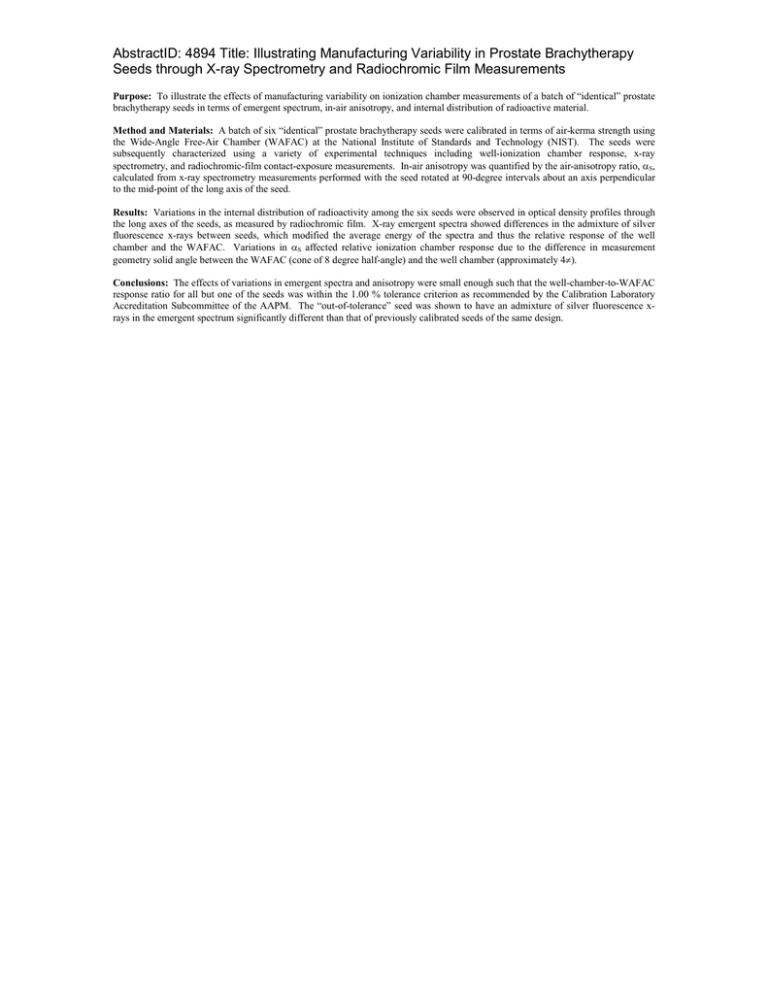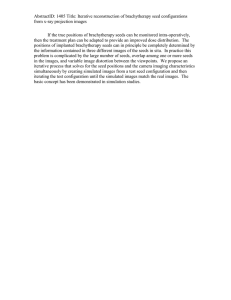AbstractID: 4894 Title: Illustrating Manufacturing Variability in Prostate Brachytherapy
advertisement

AbstractID: 4894 Title: Illustrating Manufacturing Variability in Prostate Brachytherapy Seeds through X-ray Spectrometry and Radiochromic Film Measurements Purpose: To illustrate the effects of manufacturing variability on ionization chamber measurements of a batch of “identical” prostate brachytherapy seeds in terms of emergent spectrum, in-air anisotropy, and internal distribution of radioactive material. Method and Materials: A batch of six “identical” prostate brachytherapy seeds were calibrated in terms of air-kerma strength using the Wide-Angle Free-Air Chamber (WAFAC) at the National Institute of Standards and Technology (NIST). The seeds were subsequently characterized using a variety of experimental techniques including well-ionization chamber response, x-ray spectrometry, and radiochromic-film contact-exposure measurements. In-air anisotropy was quantified by the air-anisotropy ratio, αS, calculated from x-ray spectrometry measurements performed with the seed rotated at 90-degree intervals about an axis perpendicular to the mid-point of the long axis of the seed. Results: Variations in the internal distribution of radioactivity among the six seeds were observed in optical density profiles through the long axes of the seeds, as measured by radiochromic film. X-ray emergent spectra showed differences in the admixture of silver fluorescence x-rays between seeds, which modified the average energy of the spectra and thus the relative response of the well chamber and the WAFAC. Variations in αS affected relative ionization chamber response due to the difference in measurement geometry solid angle between the WAFAC (cone of 8 degree half-angle) and the well chamber (approximately 4π). Conclusions: The effects of variations in emergent spectra and anisotropy were small enough such that the well-chamber-to-WAFAC response ratio for all but one of the seeds was within the 1.00 % tolerance criterion as recommended by the Calibration Laboratory Accreditation Subcommittee of the AAPM. The “out-of-tolerance” seed was shown to have an admixture of silver fluorescence xrays in the emergent spectrum significantly different than that of previously calibrated seeds of the same design.






